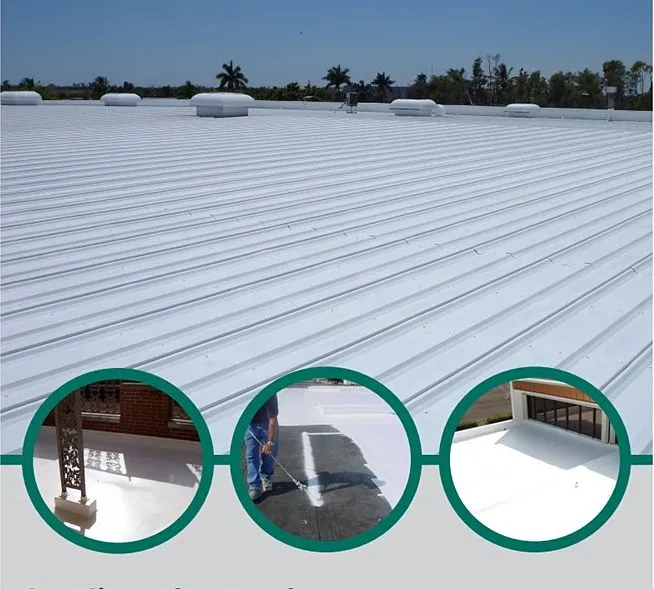No products in the cart.
Return To ShopE814RCP Co-Polymer Reflective White Roof Coating
E814CP is a solar heat reflective, white colored one part elastomeric co-polymer (SEBS based) liquid rubber coating modified for excellent 500%+ elongation, tensile strength, UV resistance and exceptional weathering characteristics.
Wth a solar reflectance index (SRI) of 102 the white colored E814CP helps reduce energy costs by reflecting heat away from the roof surface. This extremely flexible roof membrane has excellent waterproofing performance and resistance to ozone as well as low temperature flexibility. The E814RCP is Class A Fire Rated and UL Tested and Certified.
E814RCP works on flat roofs and slightly sloped roofs that may be subject to periodic ponded or pooled water. The E814RCP works on a wide range of roof surfaces including EPDM, APP, TPO, Hypalon, BUR, Fiberglass, PVC, Polyurethane Foam, concrete, wood and metal. For Modified Bitumen surfaces you can get color bleed through which may require an additional coat. Not recommended for application over tar based roofing.
For roof projects requiring a non-slip walkway as part of the roof coating system, see our E814R Co-Polymer Liquid Rubber Roof Walkway Coating.
E814RCP Reflective White Roof Paint is available in 1 gallon, 2.5 gallon, 5 gallon and 50 gallon drums (ships LTL freight only).
For roof projects requiring colors besides white, please see our E814CP Co-Polymer Roof Coating which offers 11 different colors. Coverage rate depends on surface conditions and application procedures. Normally, 1 gallon per 100 square feet of a base coat and 1 gallon per 100 square feet of a topcoat combine to achieve the recommended 32 mils wet thickness (16 mils each coat).
E814RCP participates in the CRRC (Cool Roof Rating Council) Product Rating Program which describes the radiative performance of a roofing material. The E814RCP is listed in the CRRC Rating Program Directory Do a search using CRRC Prod ID: 0982-0004 for specific rating details on the E814RCP (also shown on our Specifications Tab). The CRRC is an independent organization that evaluates reflectivity capabilities of roofing products initially and 3 years after installation. The 3- year or aged testing results provide evidence as to the quality and ingredients in the roof coating as well as how it will perform in the future.
PRIMER: None required.
TOPCOAT: None required
Where is E814RCP White Reflective Roof Coating Used?
- Where a heat reducting, waterproof, extremely tough roof coating is needed.
- Flat and sloped roofs
- Most roof surfaces including EPDM, APP, TPO, Hypalon, BUR, Fiberglass, PVC, Polyurethane Foam, Modified Bitumen, Concrete, Wood, Metal surfaces
Why E814RCP White Roof Coating?
- Exceptionally tough, heat reflective, 1 part waterproof coating
- Great for both Flat and Sloped roofs
- Excellent adhesion to EPDM, APP, TPO, Hypalon, BUR, Fiberglass, PVC, Polyurethane Foam, Concrete, Wood, Metal surfaces
- Reflective white color reduces energy costs with Solar Reflectance 82.5% and SRI 102 (solar reflective index)
- Excellent waterproof with E96 Vapor Transmission Class I 0.025 perms and Water Absorption 0.04%
- Excellent weathering
- Excellent UV stability
- Good resistance to dirt pickup
- Excellent low temp flexibility 500%+ Elongation
- Resists mildew and fungi growth
- Good resistance to Alkalis and acids
- Underwriters Laboratories (UL) Tested & Certified
- Class A Fire Rated
